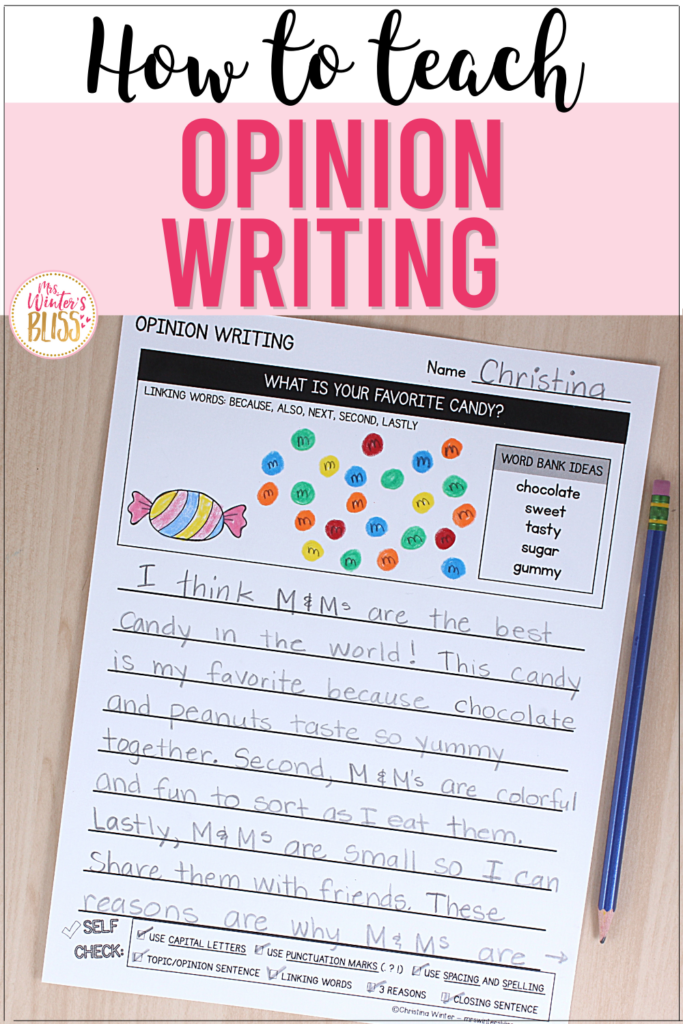
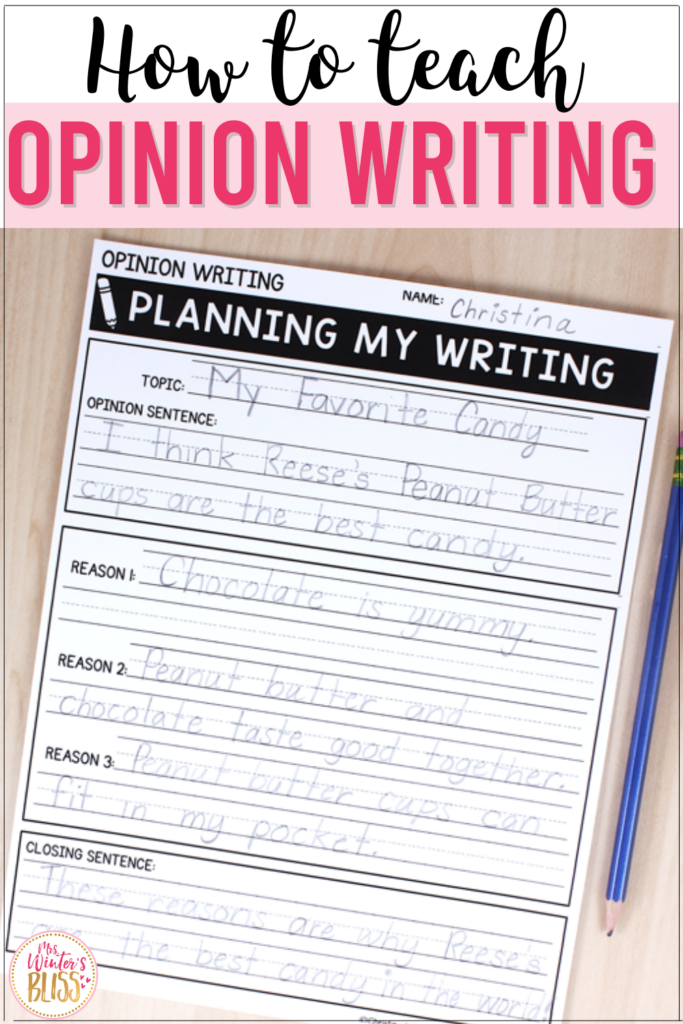
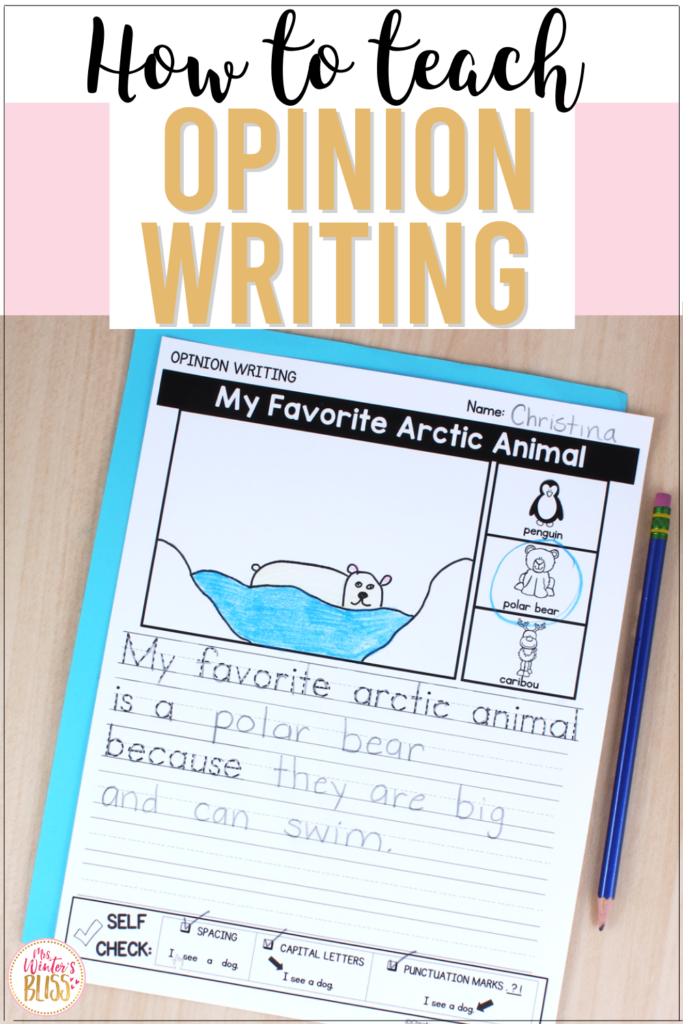
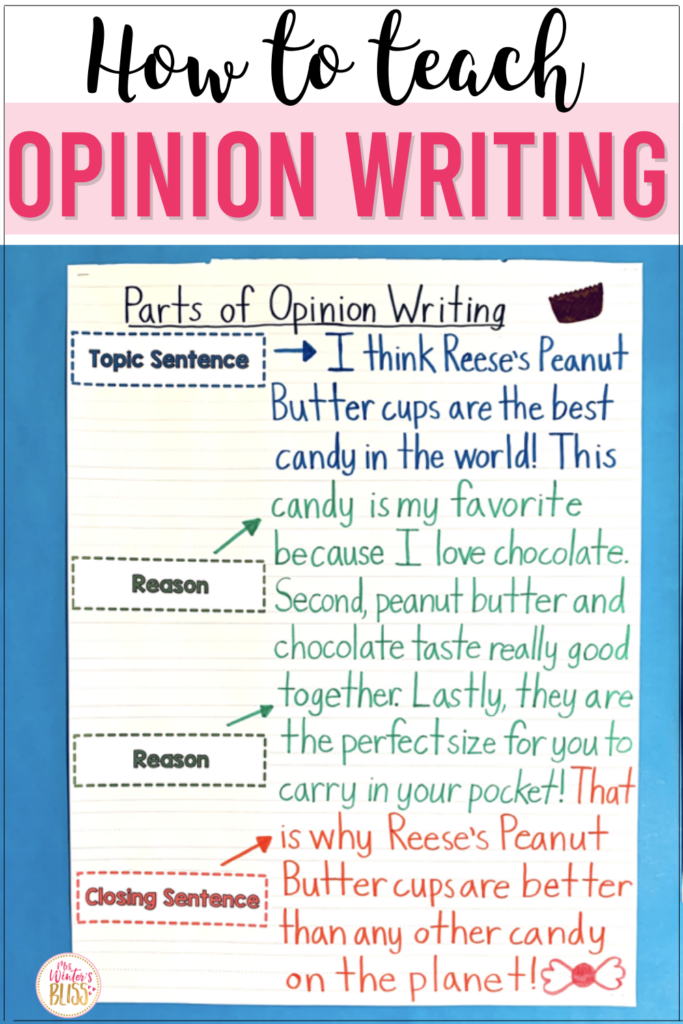
In this post, I share 5 tips for How to Teach Opinion Writing and provide details about the Opinion Writing Units resources I have created for Kindergarten, 1st and 2nd grade students. Be sure to download 3 FREE opinion writing graphic organizers!
The Common Core writing domain focuses on three big types of writing: informative, narrative, and opinion writing. Each genre serves a unique purpose and follows a specific structure in which we must explicitly teach our students. In my last post I shared tips and resources for teaching Informative Writing and today I’m excited to move on to Opinion Writing.
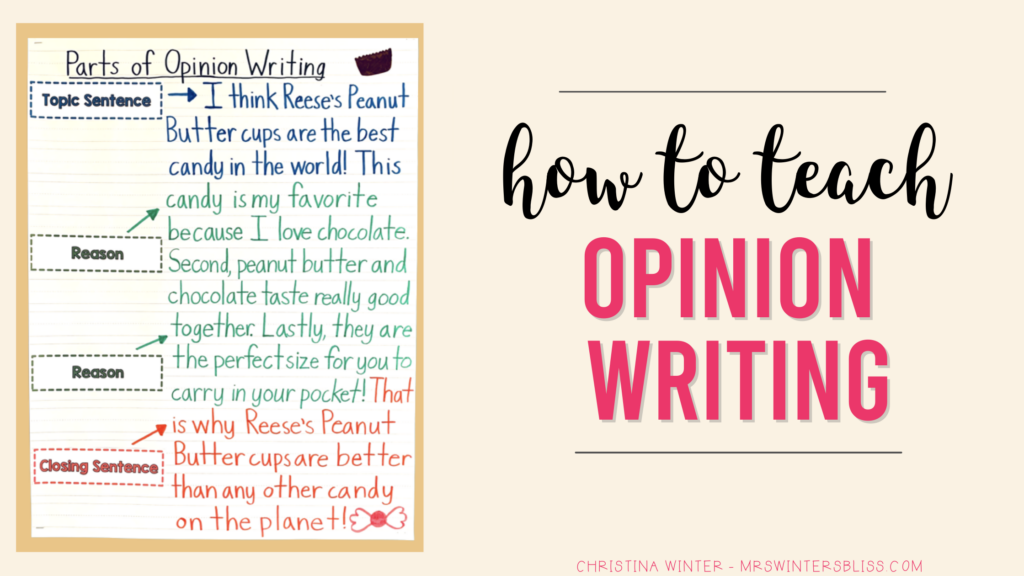
Opinion Writing is one of my favorite genres to teach. Young students have opinions on just about EVERYTHING and they usually aren’t afraid to share them!! For this reason, they find the genre highly engaging!
Today I’m sharing 5 tips for teaching opinion writing, as well as a valuable resource that has everything you need to bring opinion writing into your kindergarten, first grade, or second grade literacy centers!
Tips for Teaching Opinion Writing
1. Read Opinion Writing Mentor Texts
Before you can ask your students to write in a genre that is new to them, you must first immerse them in it. So to begin your unit, you’ll want to share examples of opinion writing with your students. These mentor texts provide students with excellent examples of opinion writing.
As you read them aloud, highlight the way the author structures their writing. Identify the author’s topic or opinion and point out the reasons he or she gives to support their opinion. All of these things will help students better understand what type of writing we are asking them to do.
When you’re picking opinion mentor texts to share with your students there are a few things to consider. First, do you (the educator) think it is excellent? Second, is it easy for your students to understand? And finally, is it relevant to the type of writing you are teaching? If you answer “Yes!” to all three, then you’re good to go!
To help you out I’ve created a list of excellent mentor texts you can use when teaching opinion writing to kindergarten, first, or second grade students.
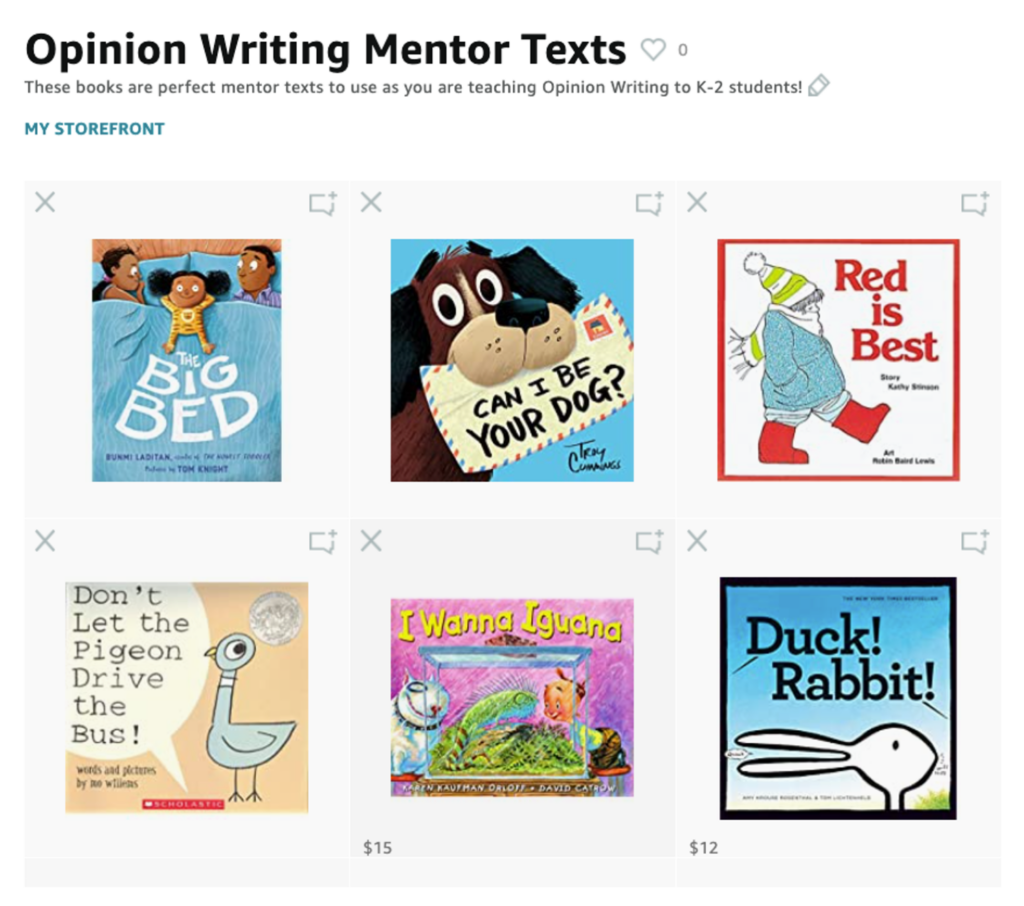
A List of Opinion Writing Mentor Texts:
- Duck Rabbit by Amy Krouse Rosenthal
- I Wanna Iguana by Karen Kaufmann Orloff
- Don’t Let the Pigeon Drive the Bus by Mo Willems
- Red is Best by Kathy Stinson
- Can I Be Your Dog? by Troy Cummings
- The Big Bed by Bunmi Laditan
I’ve saved all these titles on one board so you can easily take a closer look at these mentor texts. Click here to see this list on Amazon.
2. Model Your Own Opinion Writing
I know I say this a lot, but it’s worth repeating…. MODEL, MODEL, and then once again MODEL what you expect your students to do! It is a tremendously powerful instructional tool!
When teaching opinion writing you’ll first model how to choose a topic. When you generate ideas you can ask yourself, “What do I know all about?” “What do I care about?” “What do I wish other people believed?”.
If these questions feel too broad for your students you can use simple “would you rather” questions to get your ideas for an opinion piece. For example, “Would you rather have a dog or a cat?” This could lead to the topic, “Dogs are the best pet.” Keep it simple and choose a topic that is relatable to your students.
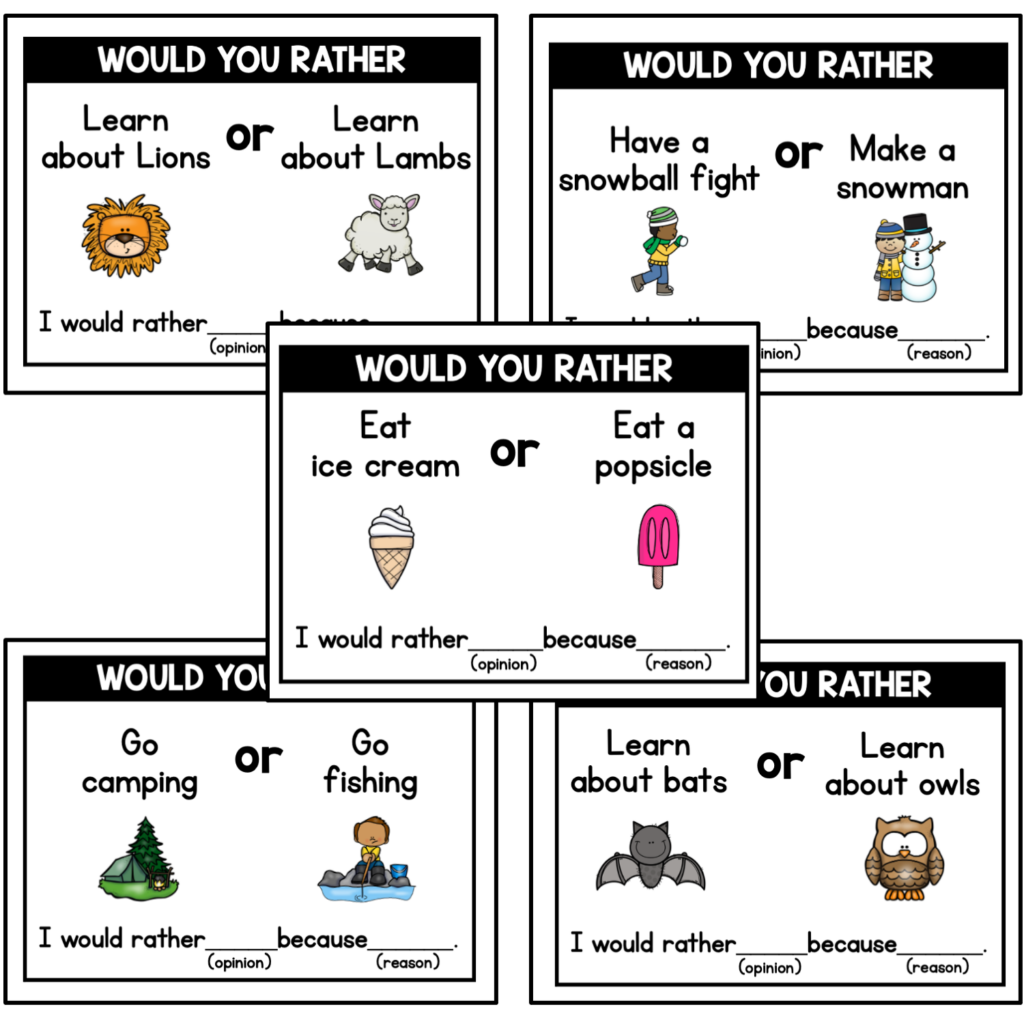
Next, model how you plan your writing using a graphic organizer. Show them how you open with a topic sentence that states your opinion. Next, come up with your supporting reasons. End with a closing sentence that restates your opinion.
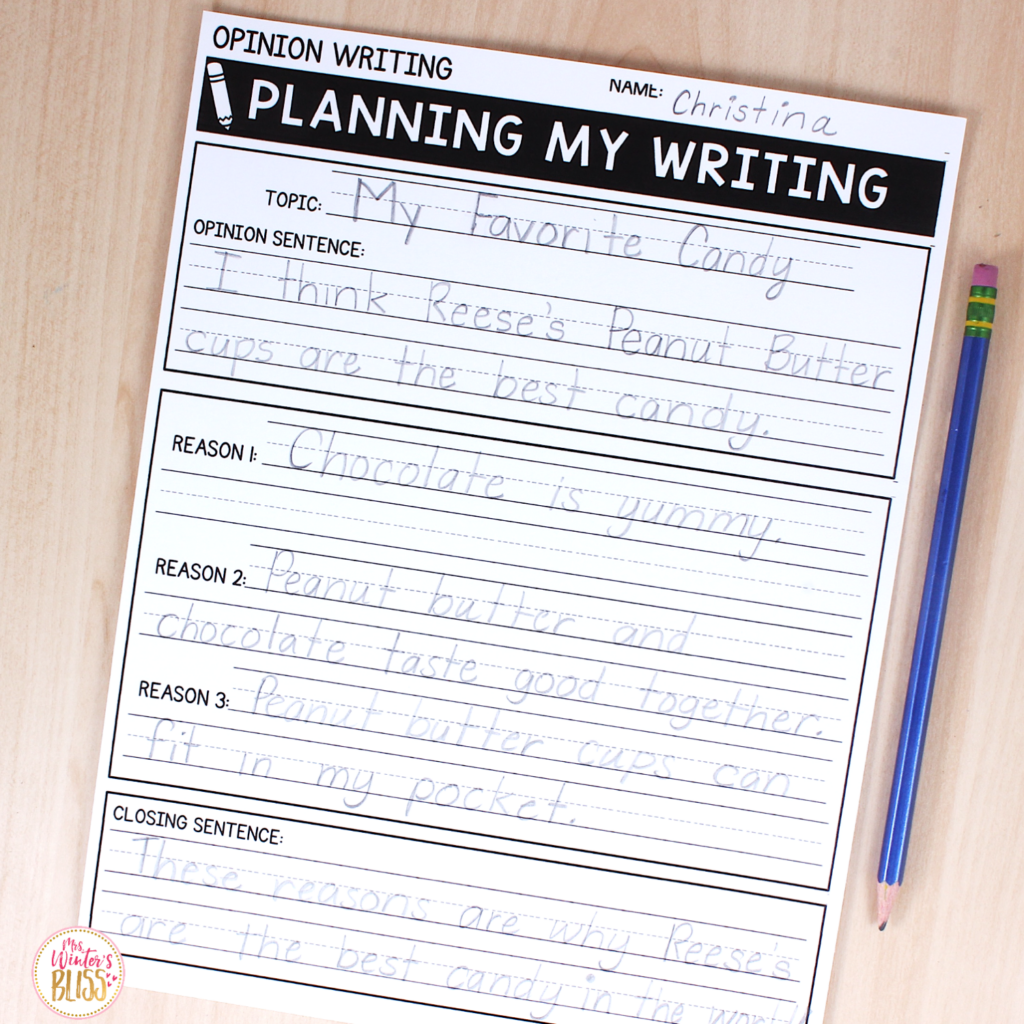
Model how you use the graphic organizer to guide you as you write out your full piece.
Finally, reread your work aloud and show students how you catch silly mistakes such as spelling, capitalization or punctuation errors. You can also show how you add additional supporting reasons to make your writing more persuasive to the reader.
3. Use Anchor Charts
You want your students to know that when they write an opinion piece they are sharing their own opinion. They are not sharing true facts. Take time to review the difference between facts and opinions. Create an anchor chart that defines fact vs. opinion.
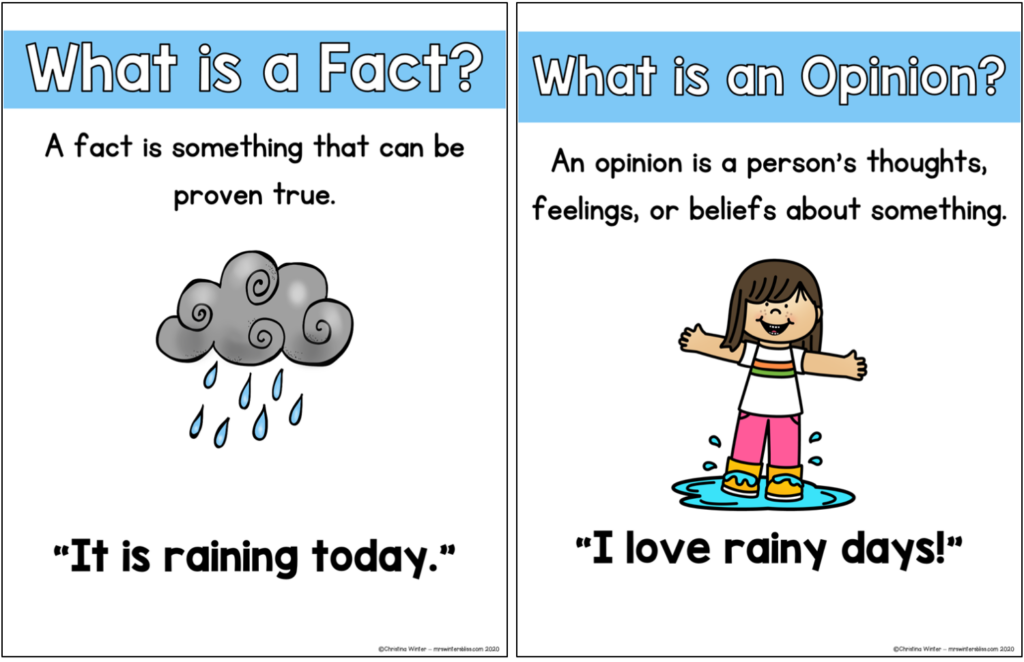
You’ll also want to review language that is specific to the genre. Remind students of the linking or transitional words that connect their opinion to their reasons.
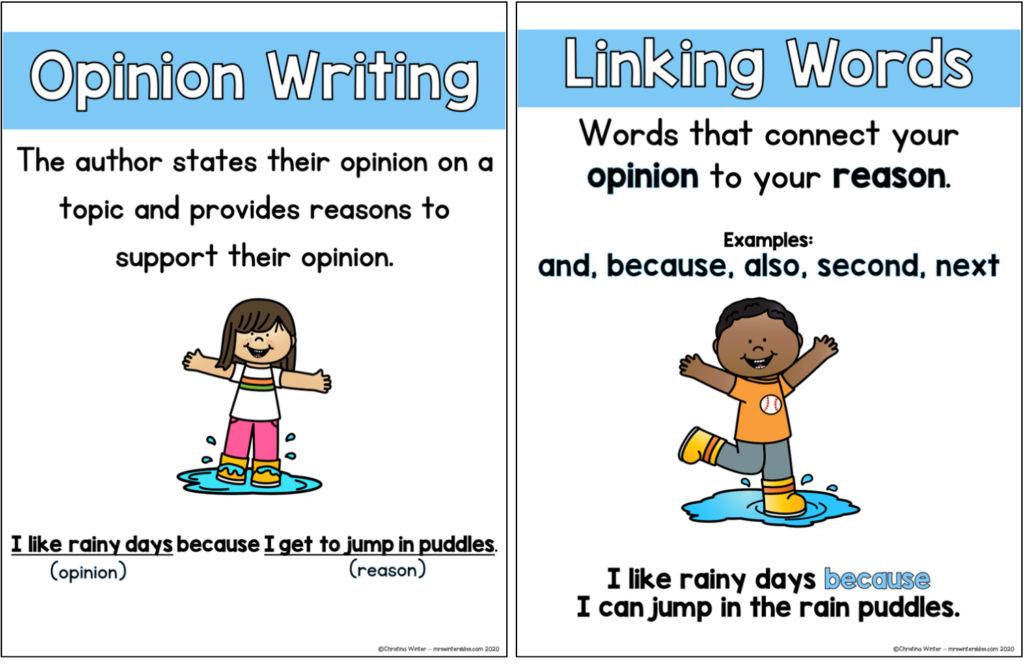
Finally, you’ll want to create an anchor chart using the writing you model. This will serve as another example of excellent opinion writing. As a class, add labels to identify the topic sentence, supporting reasons and the closing sentence in your shared writing.
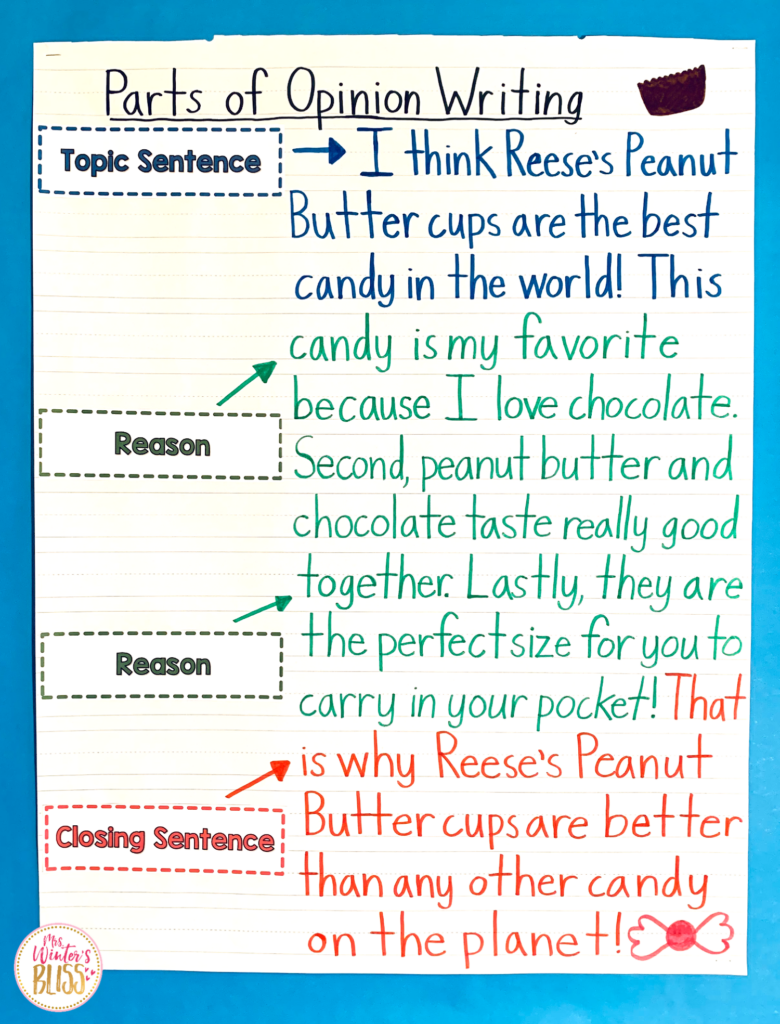
All of these anchor charts can be posted in your writing center. Encourage your students to refer back to them and use them as support as they write their own pieces.
4. Allow students to edit and share their writing
Provide a good writers checklist at your writing center. For opinion writing you’ll want the checklist to include items such, “Do I have a topic sentence that clearly states my opinion?” “Do I have supporting reasons ?” and “Do I have a closing sentence?”, as well as reminders to check for spelling, capitalization, and punctuation errors.
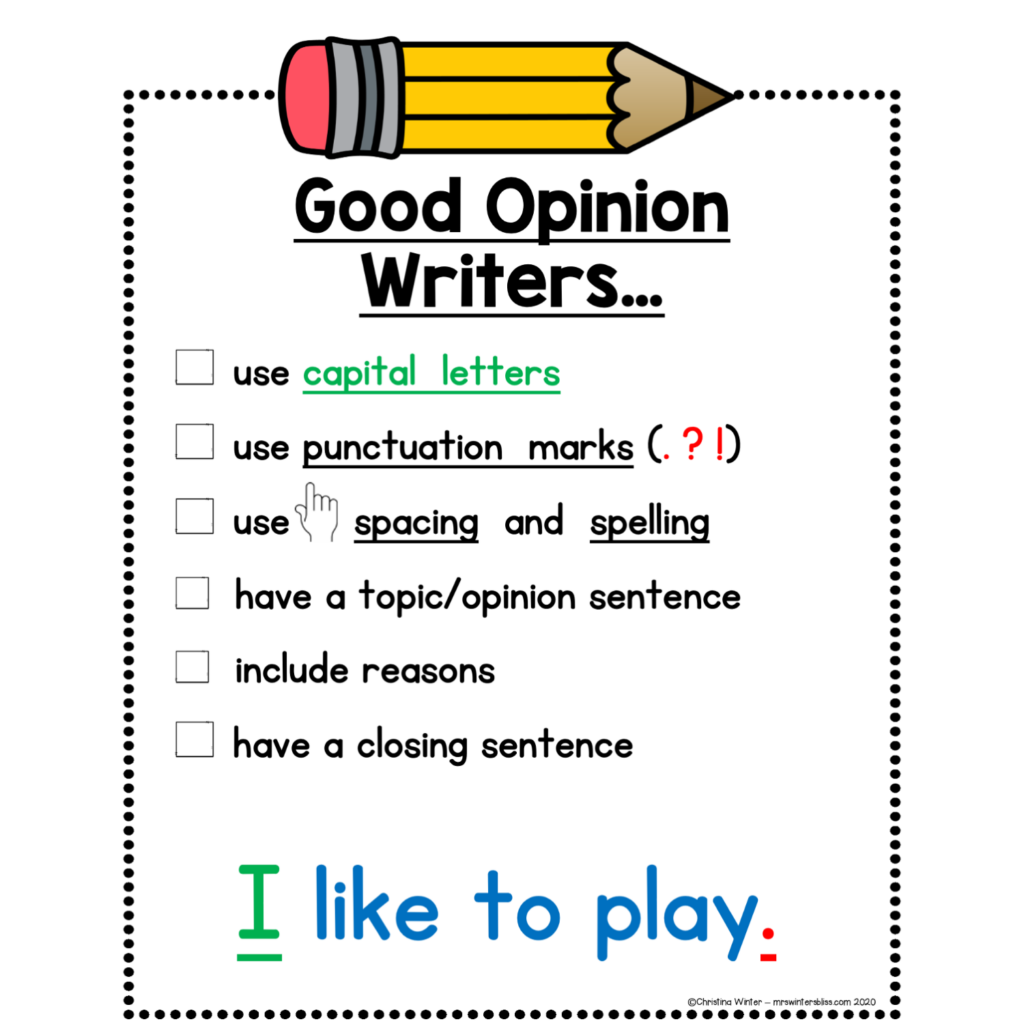
You can also create a rubric specific to the genre. Model how you use it to assess your own work and how it can be used to provide feedback to others.
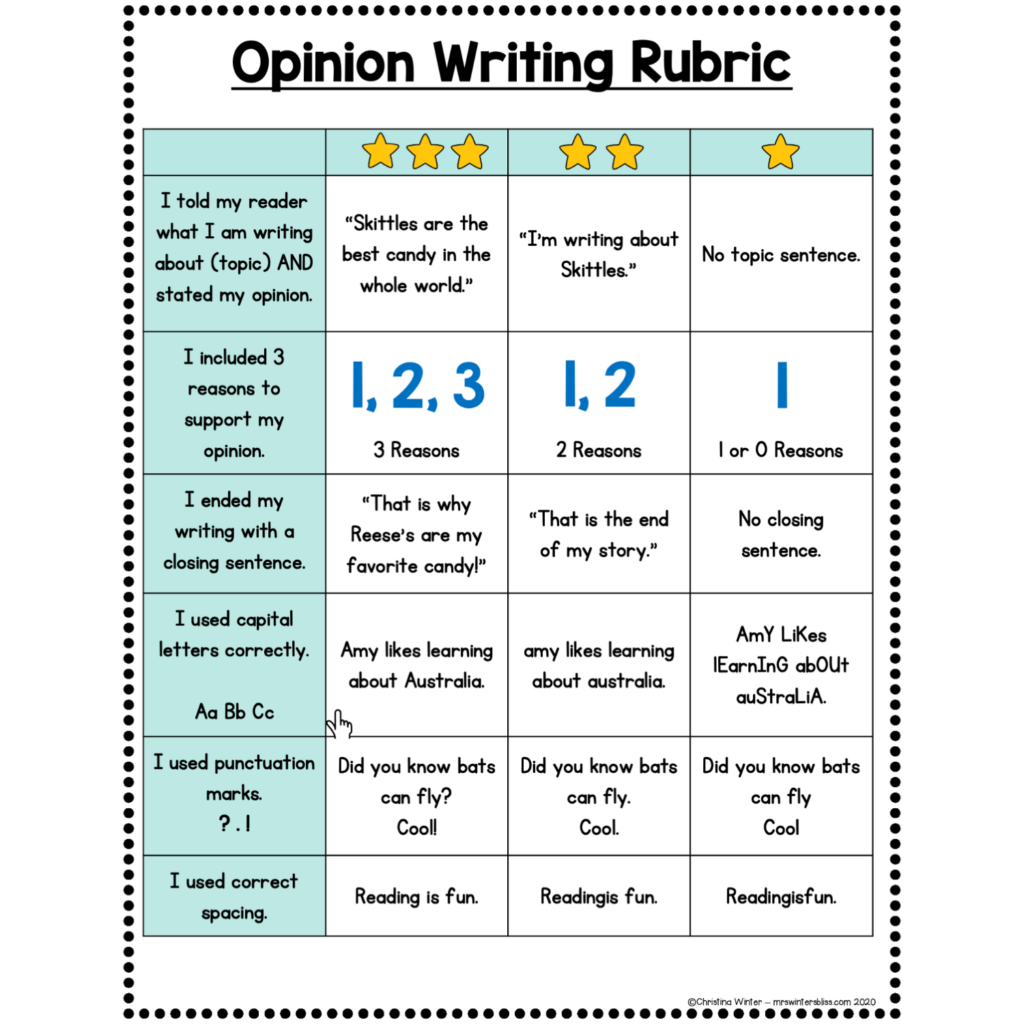
Give students the opportunity to share their writing with others! Pair students with partners and let them read their pieces to each other. Encourage them to provide feedback using the editing checklist and the rubric as a guide.

5. Provide Daily Opportunities for Students to Write
As with all things, writing takes PRACTICE! Students need dedicated instructional time to learn the skills and strategies necessary to become effective writers, as well as time to practice what they learn. When you think about your daily instructional schedule, make sure you are giving your students ample opportunities to practice their opinion writing through whole-group instruction, small groups and/or independent practice in writing centers.
Opinion Writing Unit For Kindergarten, First, and Second Grade Students
Today I’m excited to share with you the details about my Kindergarten Opinion, 1st Grade Opinion, and my 2nd grade Opinion Writing units! I love them because they have ALL the resources you need to give your students the practice they need to master opinion writing.
These units were developed with standards-based research specific to each grade. You can use them within whole class or small group instruction, or as a literacy center activity where students can practice opinion writing independently!
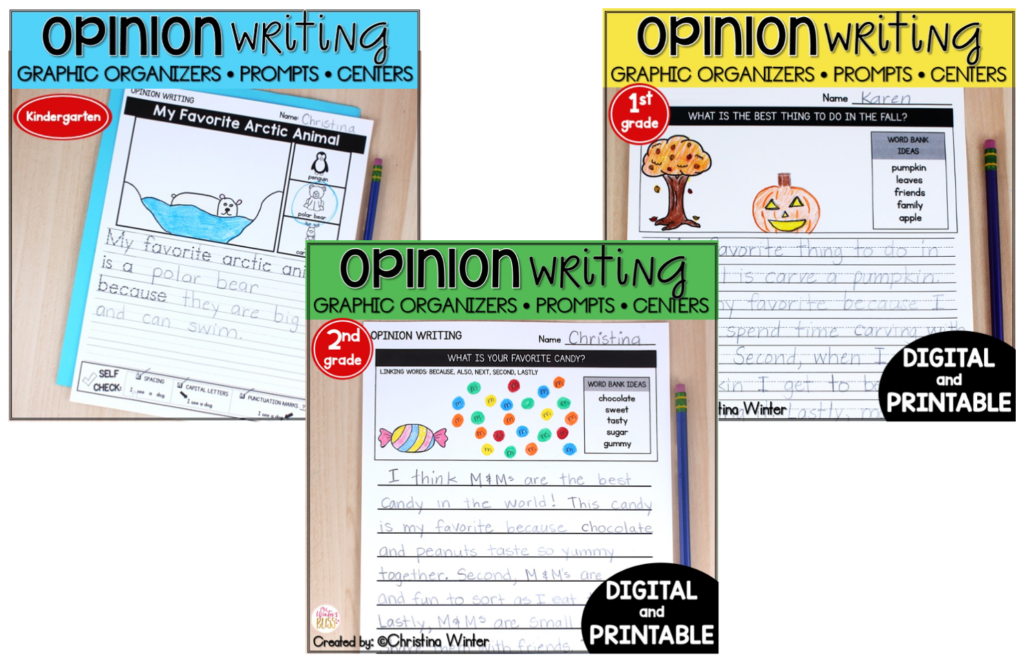
What’s Included in these Opinion Writing Resources?
The kindergarten, first grade, and the second grade opinion writing resources each include information to help you unpack the unit and a mini-lesson you’ll teach to give your students a review of opinion writing. You’ll get a list of suggested mentor texts and online resources, printable anchor charts, graphic organizers, seasonal writing prompts, and conversational task cards to help get kids to share their opinion on different topics.
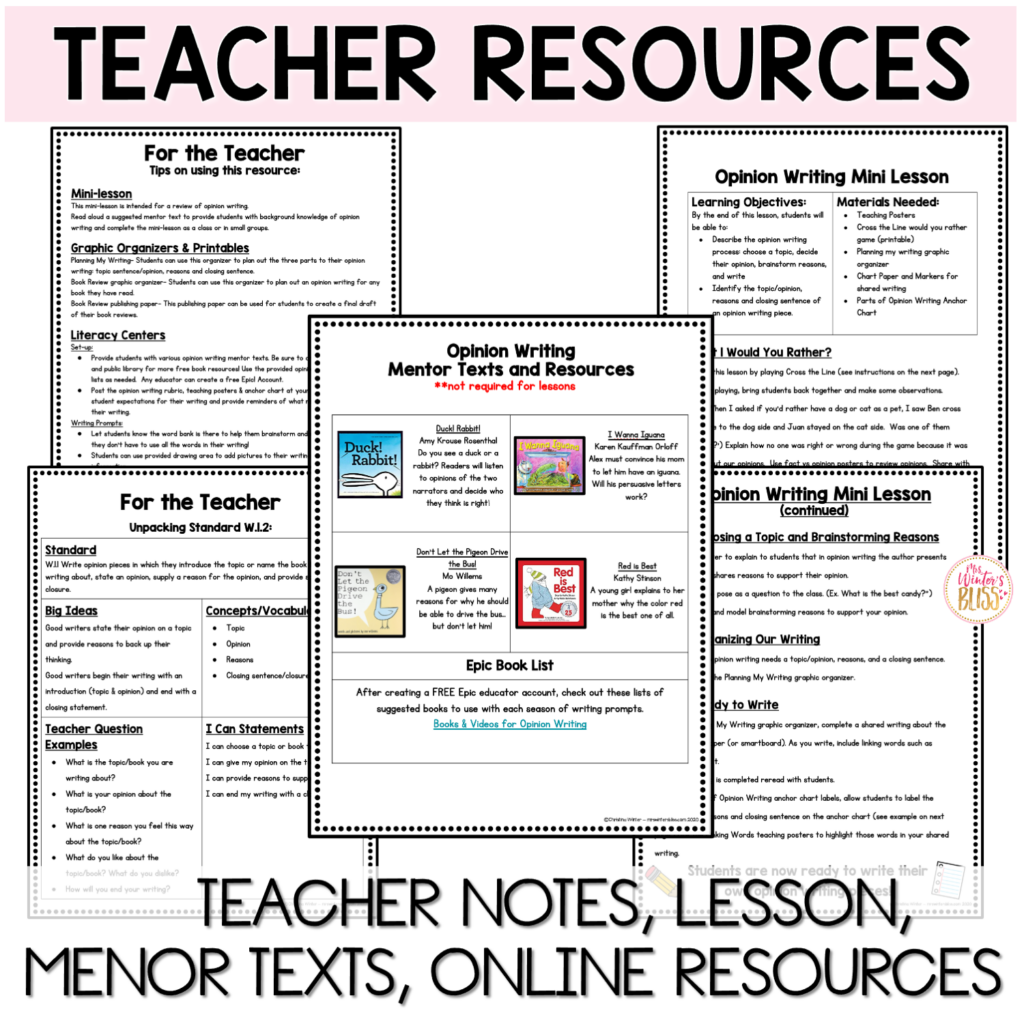
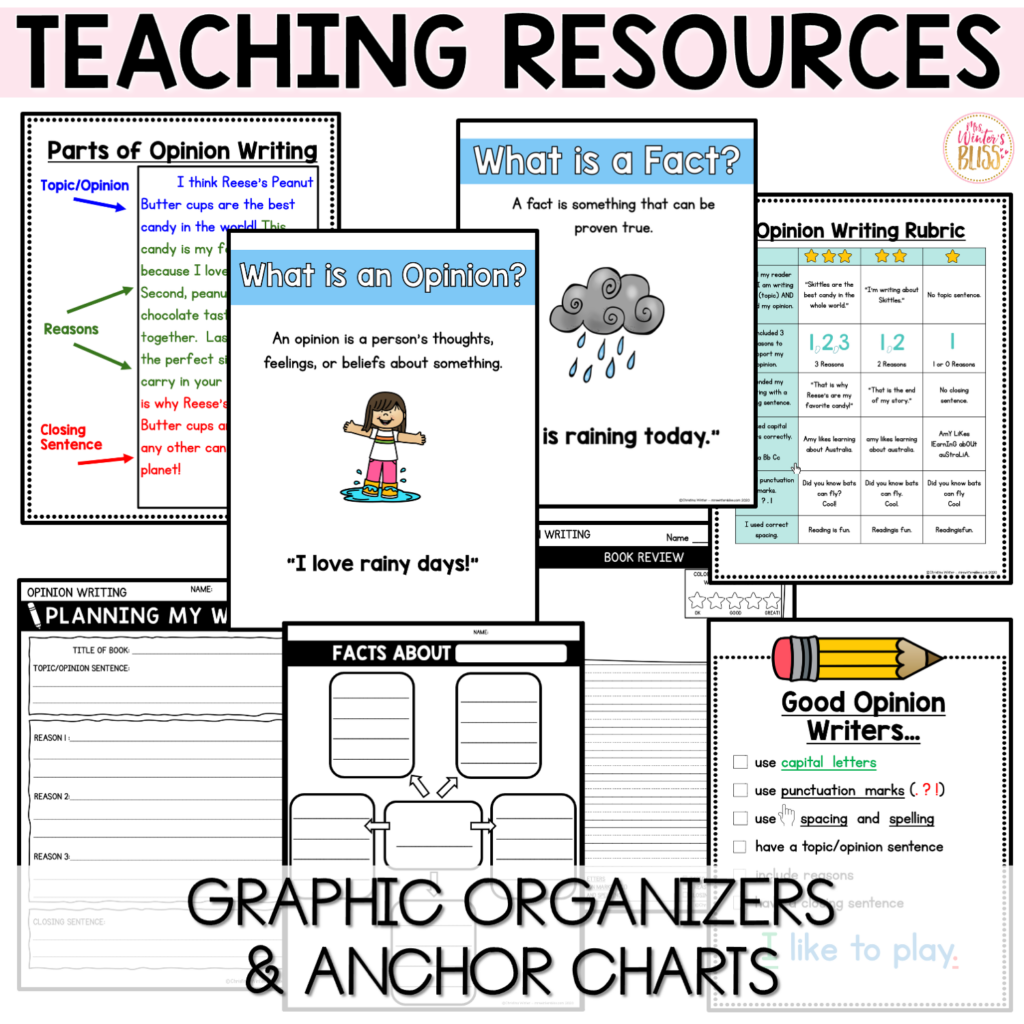
Kindergarten Opinion Writing Unit
Kindergarteners will probably need a review of fact vs. opinion so the kindergarten resource includes a printable fact vs. opinion anchor chart. You’ll also get charts with opinion writing sentence starters to help them organize their reasons and thoughts.
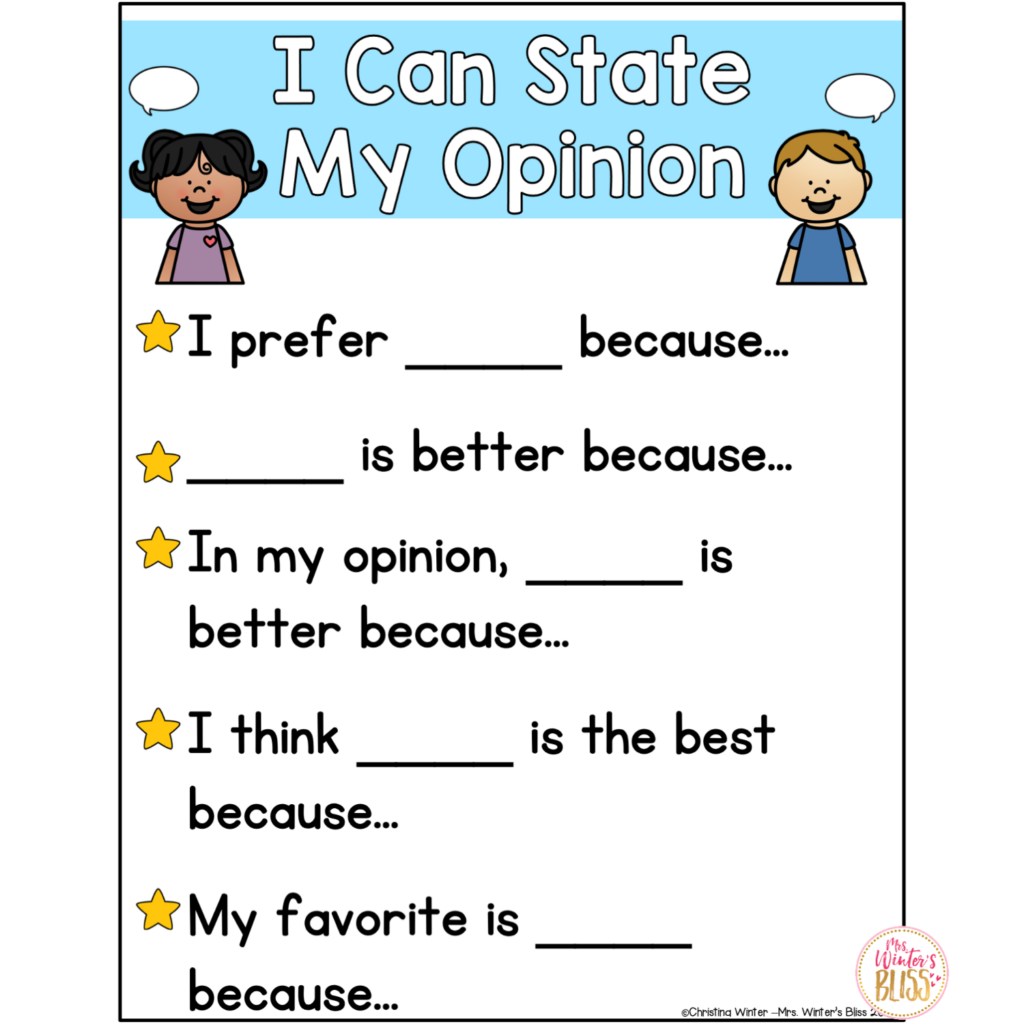
The kindergarten seasonal writing prompts come with traceable sentence stems and picture supported vocabulary word bank to assist young writers in brainstorming ideas and spelling words while writing.
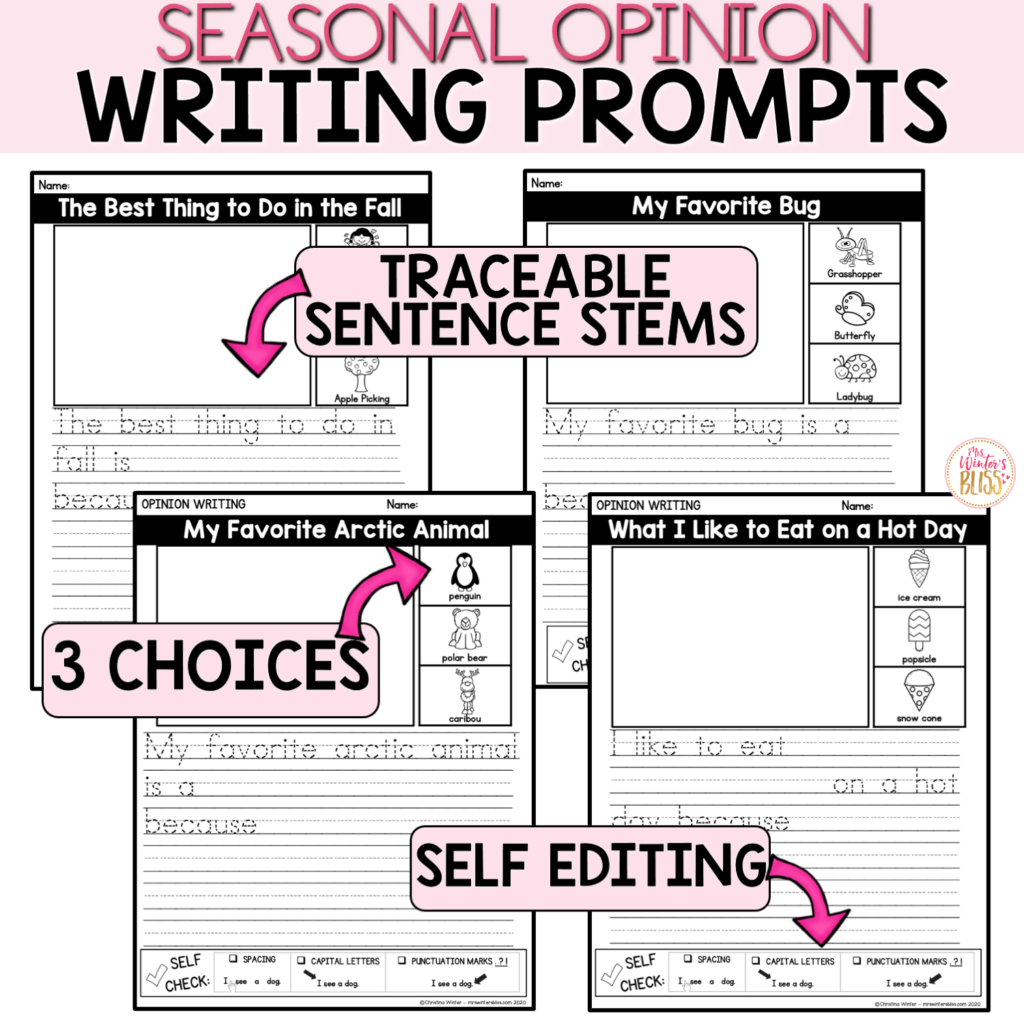
Finally, you’ll get an editing checklist that is specific to opinion writing but also appropriate for the kindergarten level.
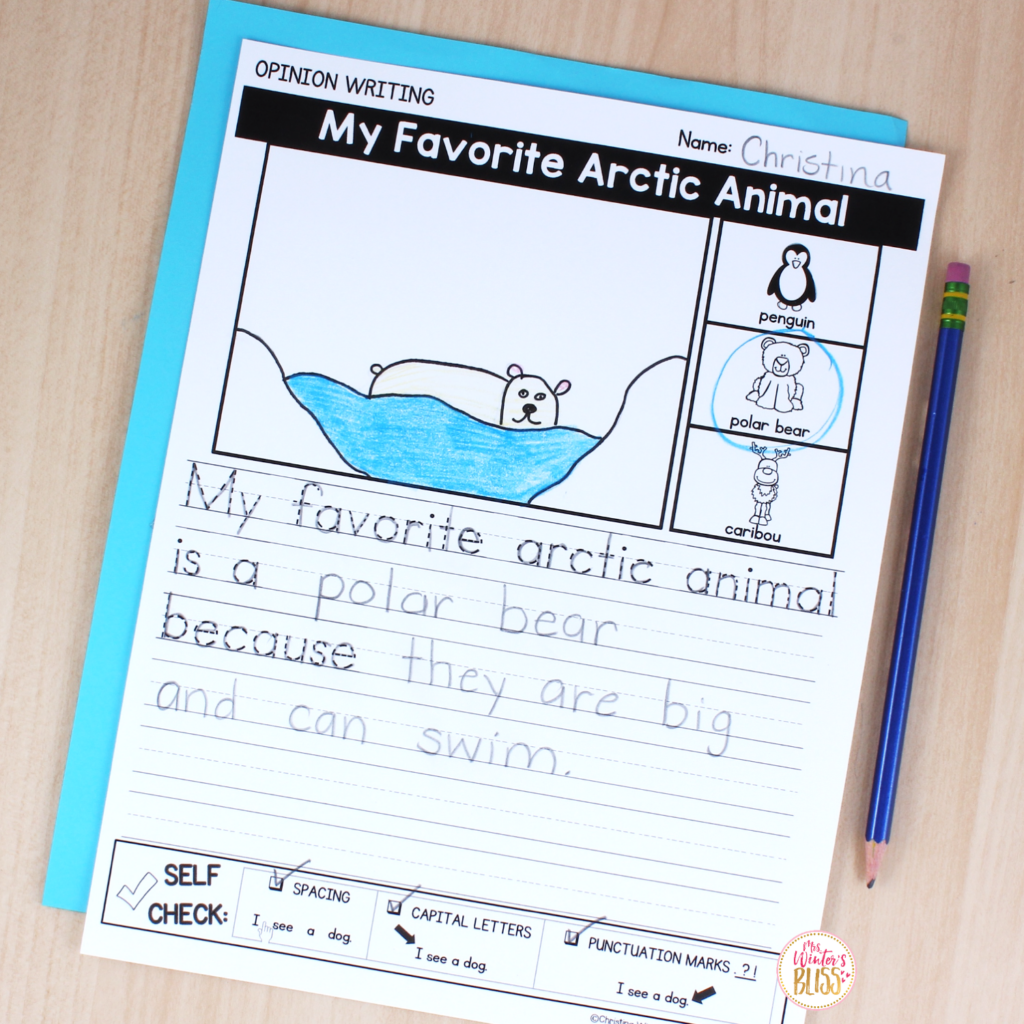
First Grade and Second Grade Opinion Writing Units
The first and second-grade resources include fact vs. opinion and linking words anchor charts that provide review and help them organize their ideas.

To help first and second-graders practice writing you’ll get 28 “Would You Rather” seasonal conversational opinion centers and 24 writing prompts. That’s more than enough to keep kids engaged in sharing their opinions all throughout the year!

The prompts are both PRINTABLE & DIGITAL. The digital version has been PRELOADED for you, with 1 click add them to your Google Drive or upload them to SeeSaw.
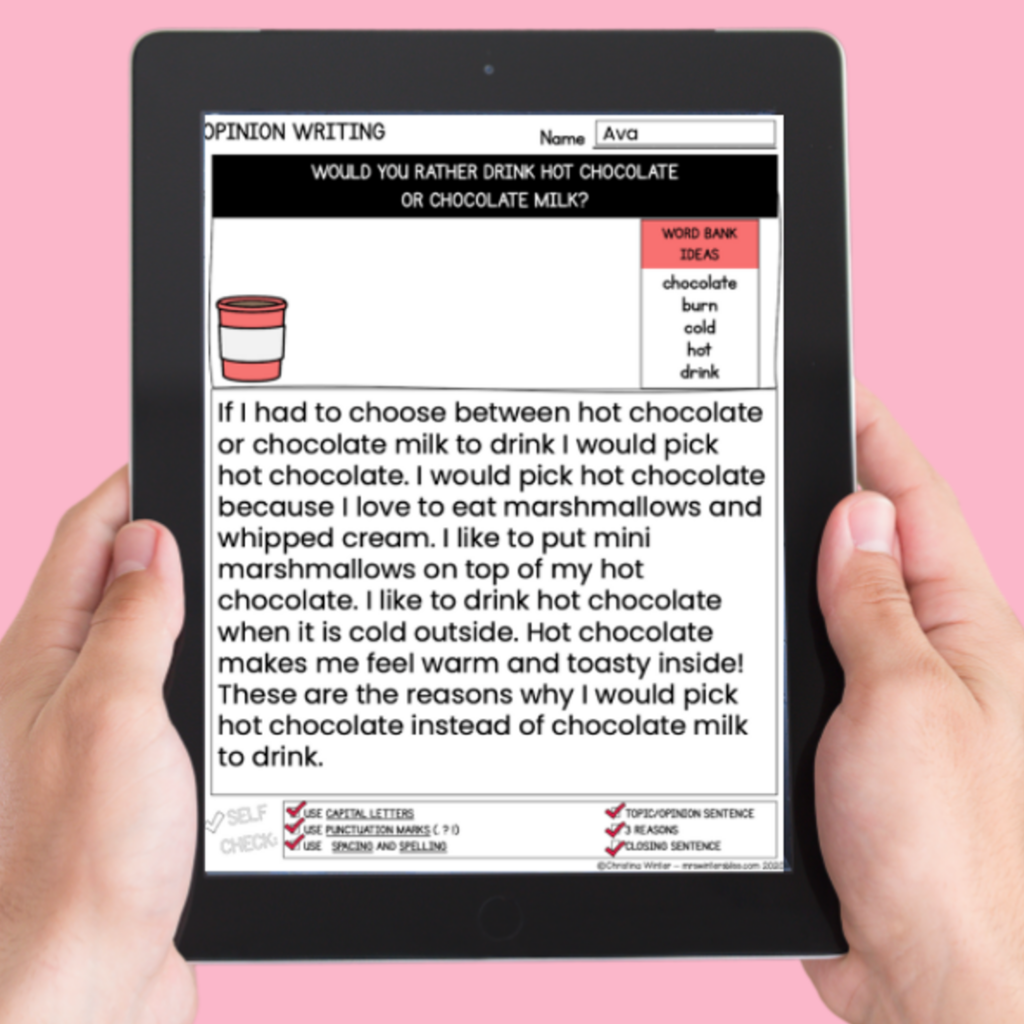
Each seasonal prompt printable paper includes a story-specific vocabulary bank to provide spelling assistance and help students get ideas for reasons to support their opinion.
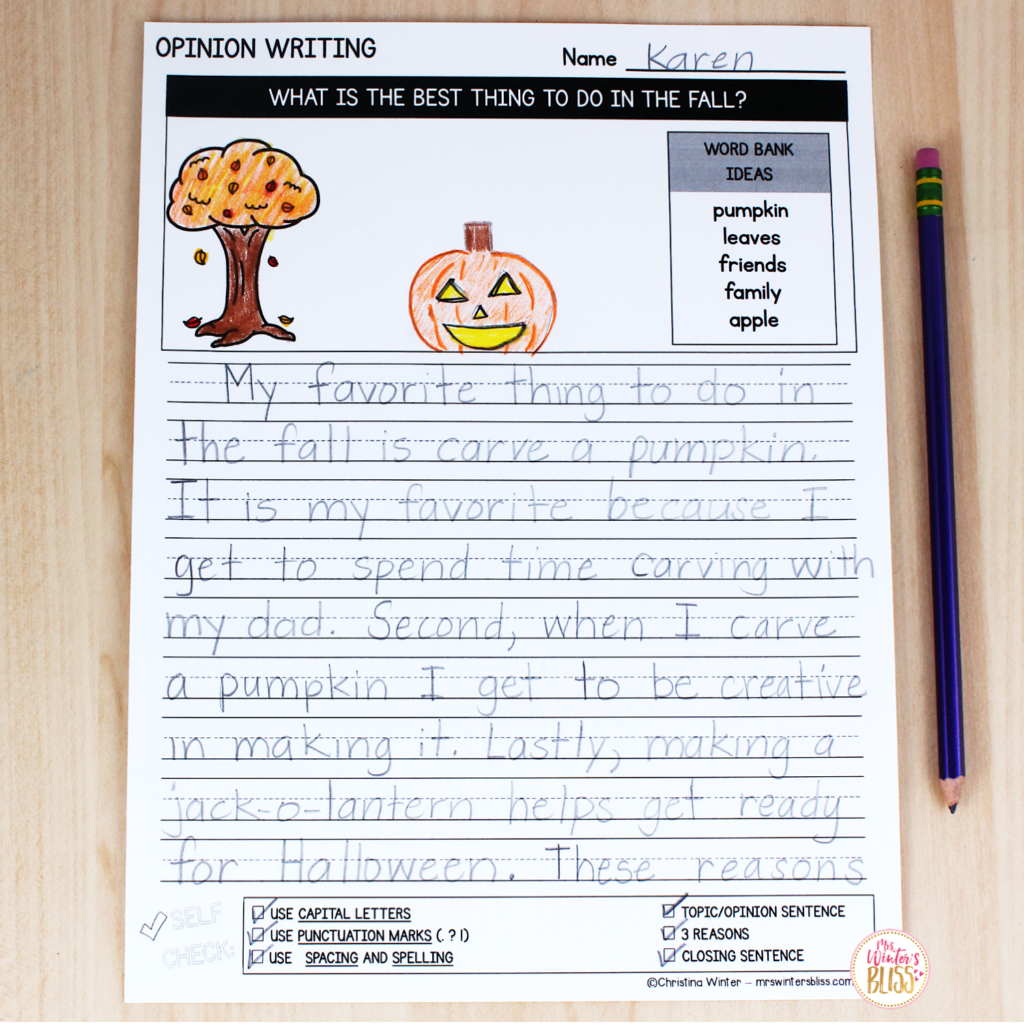
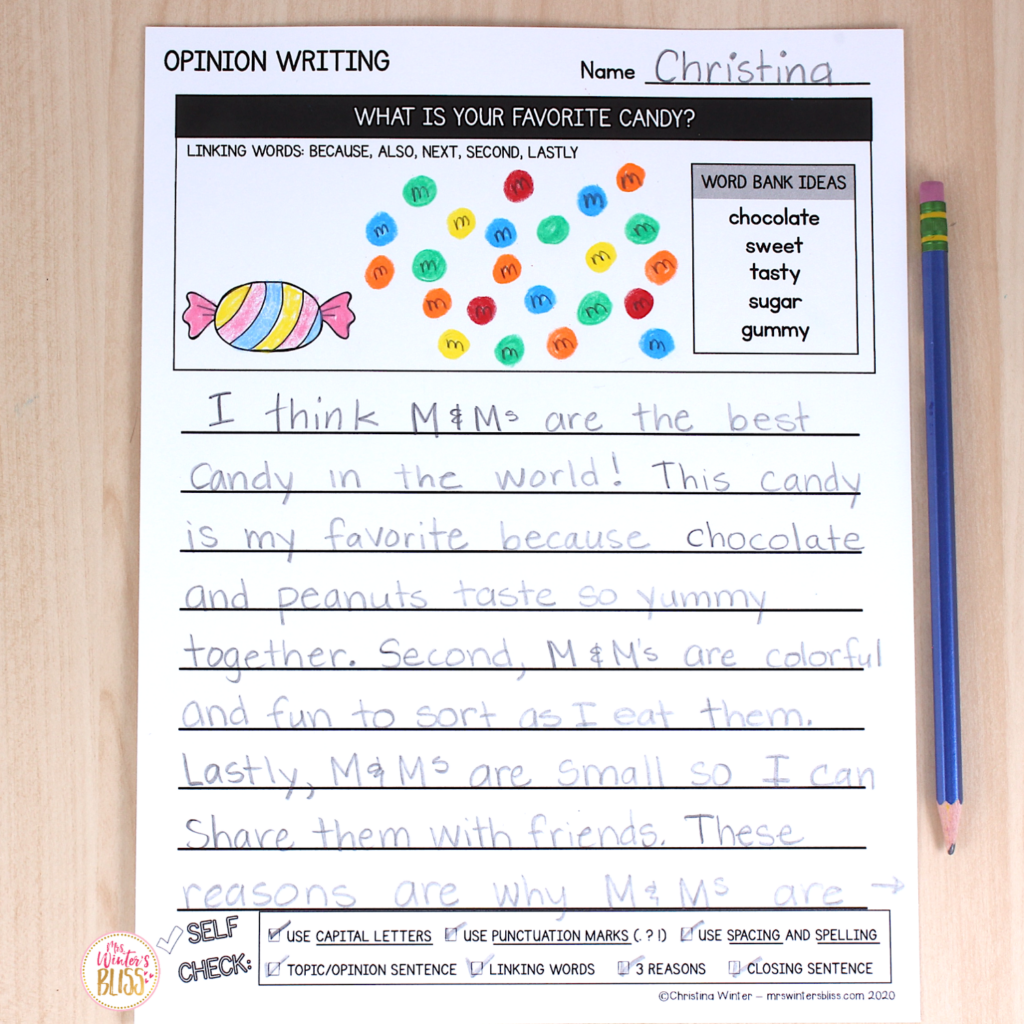
Finally, you’ll also get a self-editing checklist and rubric that have both been made specifically for opinion writing. This rubric can be used as a self-assessment tool or as a guide for peer feedback.

I love these writing units because they can be used in so many different ways. They offer opportunities for students to practice opinion writing as a whole class, in small groups, as a literacy center activity, for homework, or as a meaningful activity for when they have a substitute teacher!
FREE Opinion Writing Graphic Organizers
Are you ready to begin Opinion Writing in your classroom? To help get you started, I am happy to offer you 3 FREE Opinion Writing Graphic Organizers! You can download them here.
The ability to state one’s opinion and support it with persuasive reasons is a valuable academic and LIFE skill! I hope the information and resources I’ve shared today will help to bring stronger opinion writing instruction and more meaningful practice to your kindergarten, first and second-grade classrooms!
Be on the lookout for my next post that will focus on the final genre… Narrative Writing! I’ll share information and tips for teaching narrative writing, as well as give you details about my Narrative Writing Units for kindergarten, first and second-grade students!
-shop this post-
-
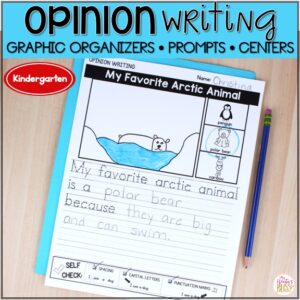 Kindergarten Opinion Writing Graphic Organizers & CentersEarn 0 Reward Points
Kindergarten Opinion Writing Graphic Organizers & CentersEarn 0 Reward Points
$7.00Rated 5.00 out of 5 based on 1 customer rating -
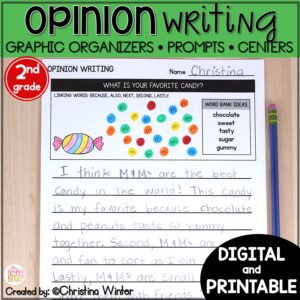 2nd grade Opinion Writing Graphic Organizers & Centers – Printable & DigitalEarn 0 Reward Points
2nd grade Opinion Writing Graphic Organizers & Centers – Printable & DigitalEarn 0 Reward Points
$7.00 -
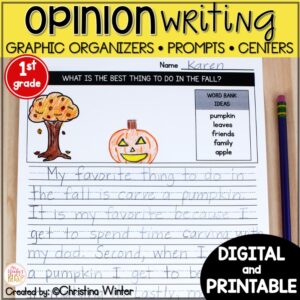 1st Grade Opinion Writing Graphic Organizers & Centers – Printable & DigitalEarn 0 Reward Points
1st Grade Opinion Writing Graphic Organizers & Centers – Printable & DigitalEarn 0 Reward Points
$7.00Rated 5.00 out of 5 based on 2 customer ratings
–PIN for LATER–










